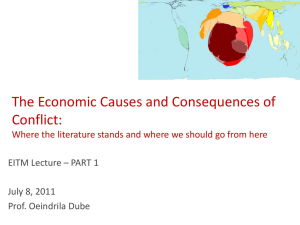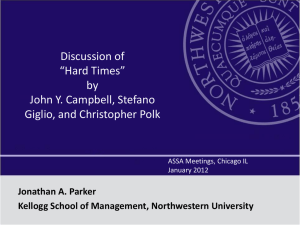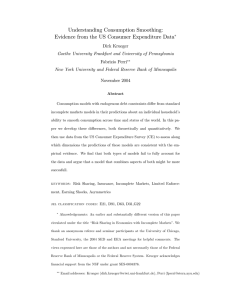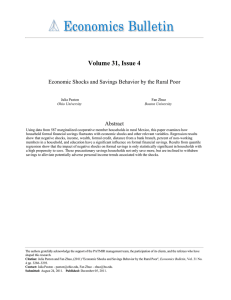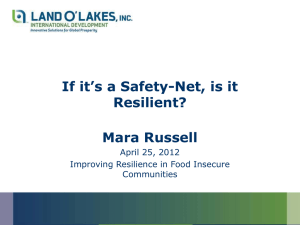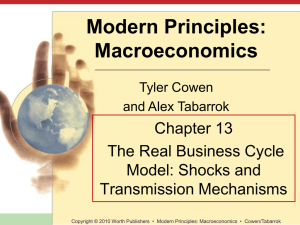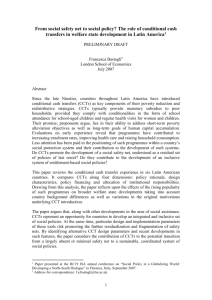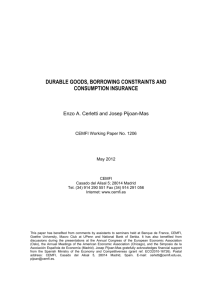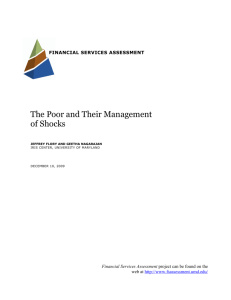Program FA - Stone Center for Latin American Studies
advertisement
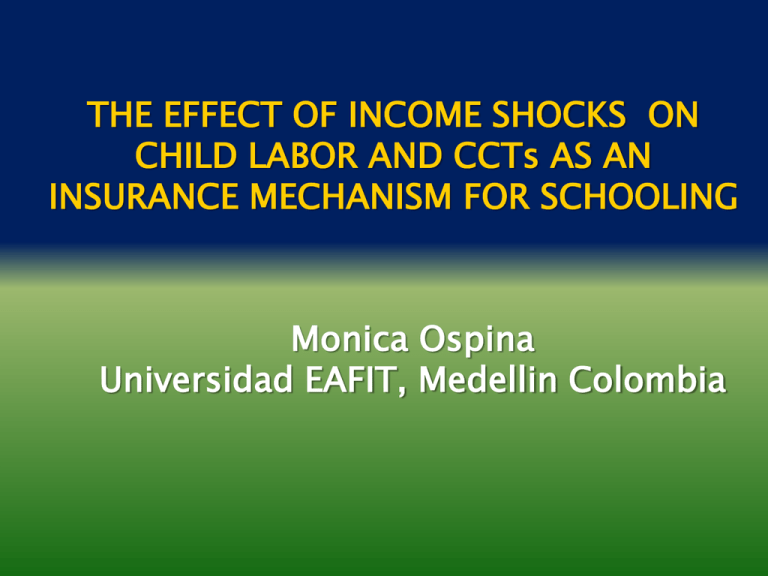
THE EFFECT OF INCOME SHOCKS ON CHILD LABOR AND CCTs AS AN INSURANCE MECHANISM FOR SCHOOLING Monica Ospina Universidad EAFIT, Medellin Colombia Indirect effects of CCTs z CCTs have become the most important social policy in LA z A number of studies provide strong evidence of the positive impacts of these programs on the main targeted outcomes: school enrollment z Behavioral changes could reinforce or offset the short term impact of these programs z Long-run poverty alleviation through investment in human capital Motivation Evidence that poor and credit constrained households use self-insurance instruments to buffer shocks: child labor FA conditions CCTs on children’s school attendance: if the price effect is much larger than the income effect of economic shocks, then CCTs can protect children’s education under risk Costs of uninsured shocks can be quite high in terms of human capital accumulation Role of FA in Colombia’s safety net Objective Has the program displaced child labor as a riskcoping instrument? Test if child labor is used as a risk-coping instrument for poor households in Colombia and whether FA can crowd out this specific behavior under credit constraints What is the impact of financial markets on schooling investments undertaken by households? Test if school time displaces/complements work time Program FA FA is the most important welfare program of the Social Safety Net in Colombia Started operating in 2002 and has benefited approximately 1.5 million households Educational and nutritional components: cash transfer is about 25% of their average income Eligibility criteria: poor households with children less than 18 years old located in targeted municipalities (also displaced households) The program’s evaluation survey is representative of poor rural households in Colombia The program was not randomly assigned, but control towns are broadly comparable to treatment towns Panel data of treated and control households, 2002-2005, with detailed data at individual, household and municipality level Literature Impact of uninsured shocks on school attendance and child labor outcomes (Beegle, Dehejia, & Gatti,2006; Duryea, Lam, & Levison, 2003; Guarcello, Mealli, & Rosati, 2003; Jacoby & Skoufias, 1997) Role of CCT programs on children’s school enrollment and work decisions (Schultz (2004), (Bourguignon, Ferreira, & Leite, 2003, Attanasio et al., 2006) Relationship between economic shocks and the impacts of CCTs on school enrollment (de Janvry et al.,2006; Maluccio 2005) Theoretical framework Model of human capital accumulation under uncertainty and incomplete markets (Jacoby and Skoufias, 1997) Households maximize a utility function defined over current consumption and future (children’s) consumption Children’s time can be used either to further increase current consumption through work, to accumulate human capital, or for leisure Human capital determines children’s future consumption. The presence of credit rationing restricts the budget set of the household and, if binding, will generate inefficiently low level of investment in human capital. Theoretical framework The model predicts four possible outcomes for children’s activities: a child can attend school full time, work full time, do neither or combine work and school. The decision of the household concerning the activities of their children will be guided by an unobservable utility index I : U=f(Z, X, C, S) •Z indicates set of household characteristics including household permanent income net of children’s contribution •X indicates a set of proxies for the rate of returns to child work and for cost and returns to schooling •C indicates a set of variable relating to credit rationing, access to, public or private, insurance mechanisms •S indicates realized shocks Data Children’s types of activity, participation percentages Data Frequency of shocks Data Mean statistic, access to insurance Methodology 1. Probability of school enrollment and child labor participation prior to the program under credit constraints and income shocks: fixed effects probit model Results Probability of school enrollment for children 7-17 years old prior to FA Results Probability of child labor for children 7-17 years old prior to FA Methodology 2. Impact of the program (ATT): DiD Matching Interactive effects with shocks and credit access Outcomes: Intensive margin: children’s time at school and at work Extensive margin: participation in school full time, work full time, and combined school and work Results ATT of FA program for the second round of the survey Results ATT of FA program for the second round of the survey Conclusions Poor rural households use child labor to cope with income shocks, but at the expense of leisure or studying time of children Credit-constrained households have a higher probability of using child labor as a risk-coping instrument FA provides strong incentives for children to combine work and school when households are exposed to shocks FA can work as insurance for the schooling of the poor but are not able to completely displace child labor Critical issues 1. Can CCTs fulfill role of safety net at times of crises? o Protects food consumption and school enrollment o FA is not very effective in displacing risk-coping instruments such as child labor o Lack built-in flexibility to expand coverage to households falling below poverty during crisis 2. Do CCTs generate behavioral changes of adults? o So far no negative incentive effects on adult work o Future research: investments and income generation




